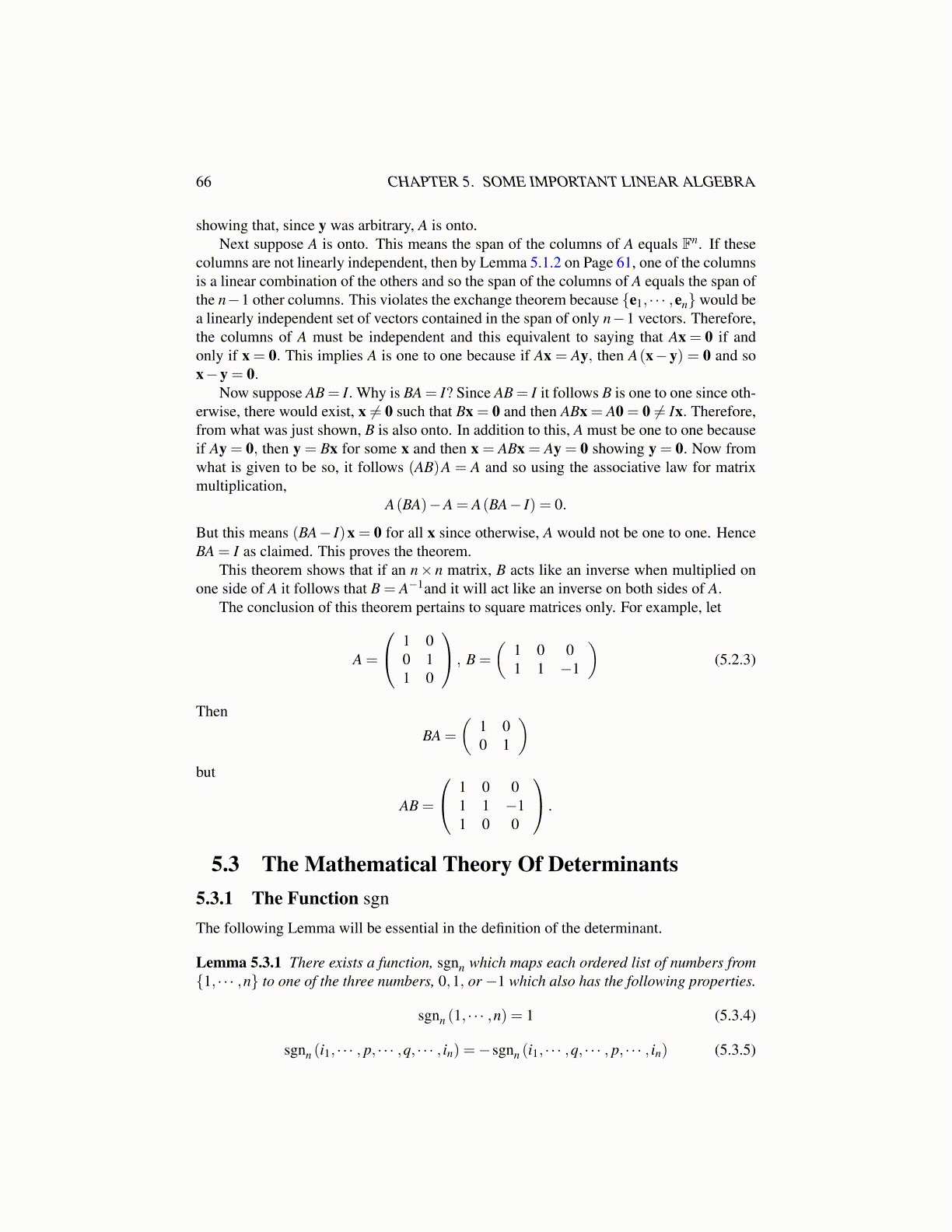
66 CHAPTER 5. SOME IMPORTANT LINEAR ALGEBRA
showing that, since y was arbitrary, A is onto.Next suppose A is onto. This means the span of the columns of A equals Fn. If these
columns are not linearly independent, then by Lemma 5.1.2 on Page 61, one of the columnsis a linear combination of the others and so the span of the columns of A equals the span ofthe n−1 other columns. This violates the exchange theorem because {e1, · · · ,en} would bea linearly independent set of vectors contained in the span of only n−1 vectors. Therefore,the columns of A must be independent and this equivalent to saying that Ax = 0 if andonly if x = 0. This implies A is one to one because if Ax = Ay, then A(x−y) = 0 and sox−y = 0.
Now suppose AB = I. Why is BA = I? Since AB = I it follows B is one to one since oth-erwise, there would exist, x ̸= 0 such that Bx = 0 and then ABx = A0 = 0 ̸= Ix. Therefore,from what was just shown, B is also onto. In addition to this, A must be one to one becauseif Ay = 0, then y = Bx for some x and then x = ABx = Ay = 0 showing y = 0. Now fromwhat is given to be so, it follows (AB)A = A and so using the associative law for matrixmultiplication,
A(BA)−A = A(BA− I) = 0.
But this means (BA− I)x = 0 for all x since otherwise, A would not be one to one. HenceBA = I as claimed. This proves the theorem.
This theorem shows that if an n× n matrix, B acts like an inverse when multiplied onone side of A it follows that B = A−1and it will act like an inverse on both sides of A.
The conclusion of this theorem pertains to square matrices only. For example, let
A =
1 00 11 0
, B =
(1 0 01 1 −1
)(5.2.3)
Then
BA =
(1 00 1
)but
AB =
1 0 01 1 −11 0 0
.
5.3 The Mathematical Theory Of Determinants5.3.1 The Function sgn
The following Lemma will be essential in the definition of the determinant.
Lemma 5.3.1 There exists a function, sgnn which maps each ordered list of numbers from{1, · · · ,n} to one of the three numbers, 0,1, or −1 which also has the following properties.
sgnn (1, · · · ,n) = 1 (5.3.4)
sgnn (i1, · · · , p, · · · ,q, · · · , in) =−sgnn (i1, · · · ,q, · · · , p, · · · , in) (5.3.5)